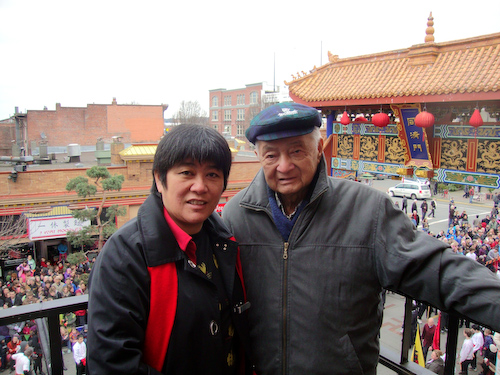- Home
- History
- Community
- Organizations
- Chinese Consolidated Benevolent Association
- Victoria Chinese Canadian Veterans Association
- Chinese Public School
- Clan Associations
- County Assocations
- Dialect Assocations
- Friendship Associations
- Political Organizations
- Recreational Associations
- Religious Organizations
- Women's Associations
- Other Organizations
- People
- Resources
- Contact
Like other communities, Victoria's Chinatown was host to a range of people of varied backgrounds, political beliefs, philosophies and religious convictions. This was as true in the nineteenth century as it is today.
Early Chinese settlers in Victoria came mainly from southern China, spoke a number of different dialects, and found communication was not always easy. Regional and clan associations sprang to life as early forms of mutual support and many of these associations continue to this day.
This is the first graduating class of the Chinese Public School, in 1915. The school principal was Lee Mong Kow, standing in the centre of the back row (Royal BC Museum, BC Archives, D-08821).
Victoria’s Chinese Public School, founded in 1909, became a focal point for many in the community. Chinese settlers in Victoria wanted their children to be able to understand their ancestral language and the school quickly gained in stature. It became an important community landmark and has been designated a national heritage site. Today, it sponsors language classes in both Cantonese and Mandarin
In the early years, males constituted the vast majority of newcomers to Victoria but from the beginning Chinese women played an important role both in the family and in the community. Women's organizations played an active role in the Chinese Empire Reform Association and in the Chinese Methodist Church from early in the 20th century.
Spiritual beliefs varied, many prayed at the Chinese temple, others were practicing Buddhists, while some joined the various denominations of Christian churches. All had a presence from the earliest days of Victoria’s Chinatown.
As the community settled in Victoria a second generation of Chinese Canadians came to the fore, with people like Victoria Chung, Joseph Hope, and Douglas Jung making important contributions in Victoria and elsewhere. This younger generation came together in Victoria’s Chinese Canadian Association and the Chinese Youth Association to socialize and to discuss issues of significance to the younger generation. Many of these young people would go on to enlist in the armed forces during World War II and they continue to meet as the Victoria Chinese Canadian Veterans Association.
Chan Dun was a founder of the Victoria Chinese Aviation School to support the Nationalist revolution in China. Edith Lee, Chan Dun’s sister-in-law, stands in front of the plane in the Lansdowne Airfield in the early 1920s. Chan Dun’s children are on the airplane and standing in front of Mrs. Lee (City of Victoria Archives, M06952).

Charlayne Thornton-Joe with her father, John Joe, at the Chinese New Year's celebrations in Chinatown, February 2013. Photo courtesy of Charlayne Thornton-Joe.
After the war, Chinese Canadians in Victoria became active in electoral politics and individuals such as Alan Lowe, Ida Chong, and Charlayne Thornton-Joe became well-know figures on the municipal and provincial scene.
Chinatown remains the heart of the community, and every year the myriad of historical organizations, including the Chinese Consolidated Benevolent Association, the affiliated clan and regional associations, the Chinatown Lions Club and Lioness Club, and many others organize events, including the Chinese New Year’s parade, celebrating the community and the city.
By John Price

